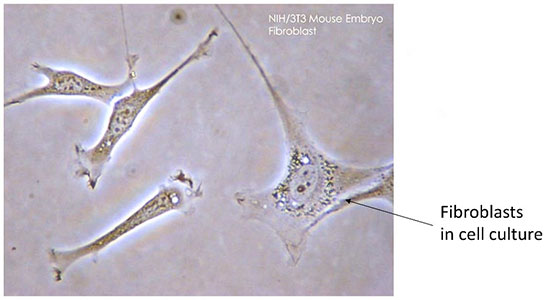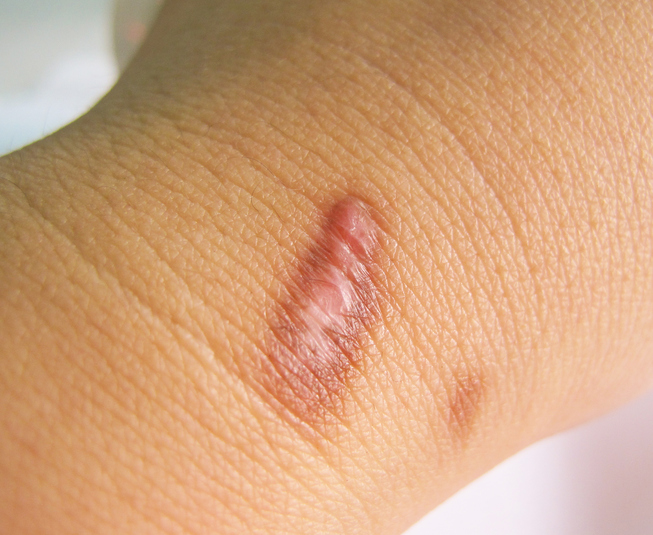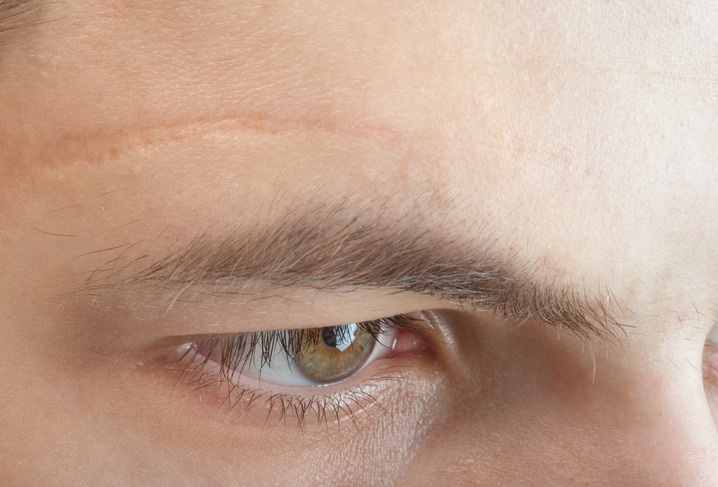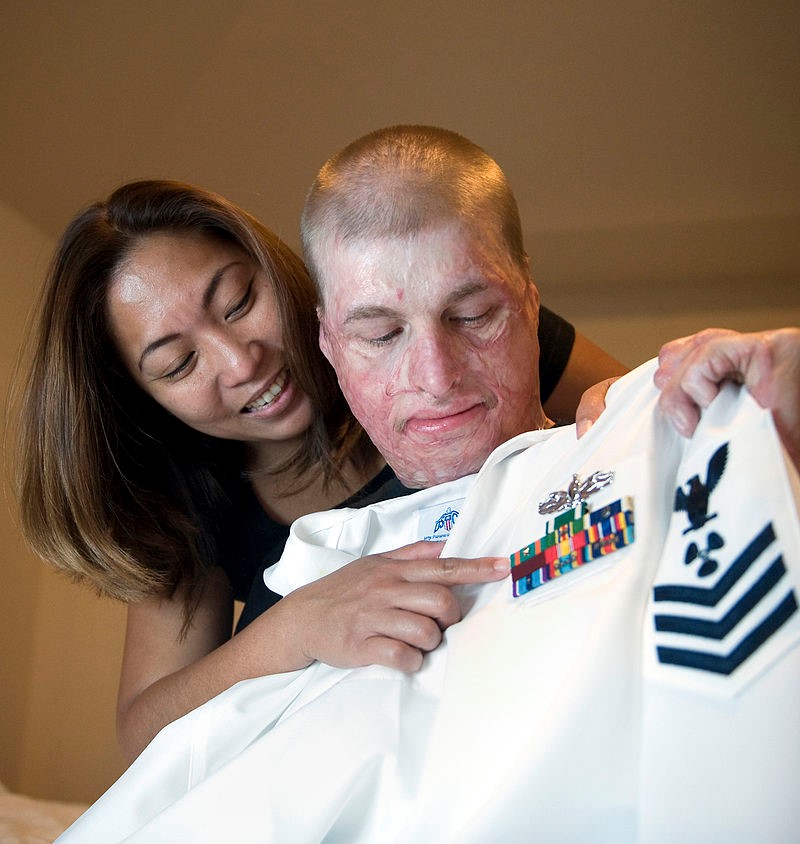Skin Repair
Damaged skin repairs itself by replacing epithelial cells with connective tissue resulting in scar formation. Before the basal stem cells of the basale layer can divide new cells for the epidermis, fibroblasts mobilize and divide rapidly to repair the damaged tissue by depositing collagen which forms granulation tissue. Blood capillaries follow the fibroblasts and help increase blood circulation and oxygen supply to the area.
Fibroblasts
A fibroblast is a type of cell that synthesizes the extracellular matrix and collagen, produces the structural framework (stroma) for animal tissues, and plays a critical role in wound healing.
They are the most common cells of connective tissue.

Keloid Scars
The new tissue is fibrous and does not allow for the regeneration of accessory structures such as hair follicles and sweat or sebaceous glands. It does not have the same flexible characteristic as the epithelial cells; thus, it is more stiff. Some scars produced are raised and extend beyond the area of the injury. These are called keloid scars.


In these images, a keloid scar is shown on the left and a regular scar is on the right.
Burn Scars
This image shows scarring from 2nd and 3rd degree burns to the face.

![]() Check your understanding:
Check your understanding:
1. If you cut your arm, the skin repairs itself by replacing the damaged epithelial cells with new epithelial cells. True or False?
